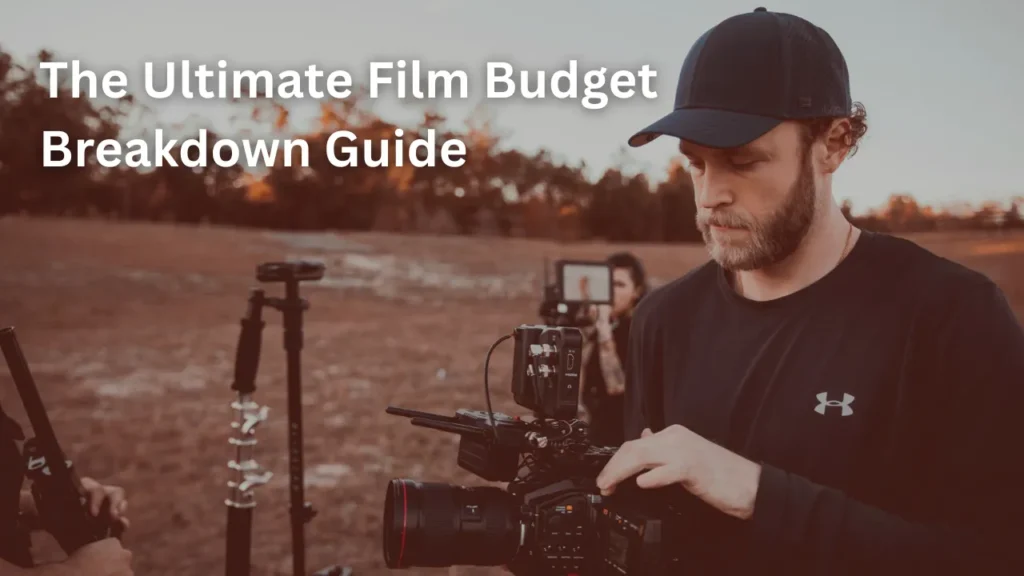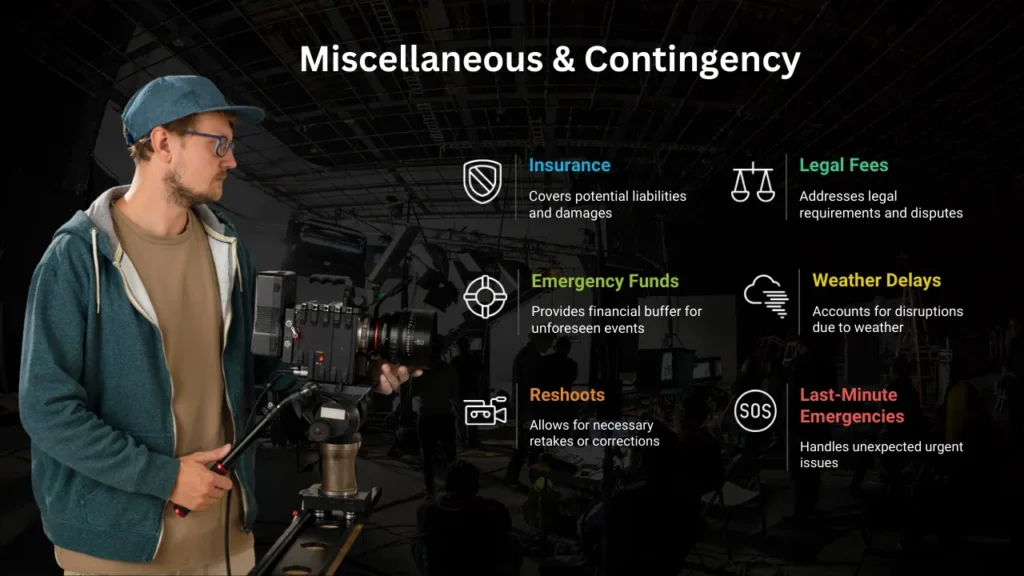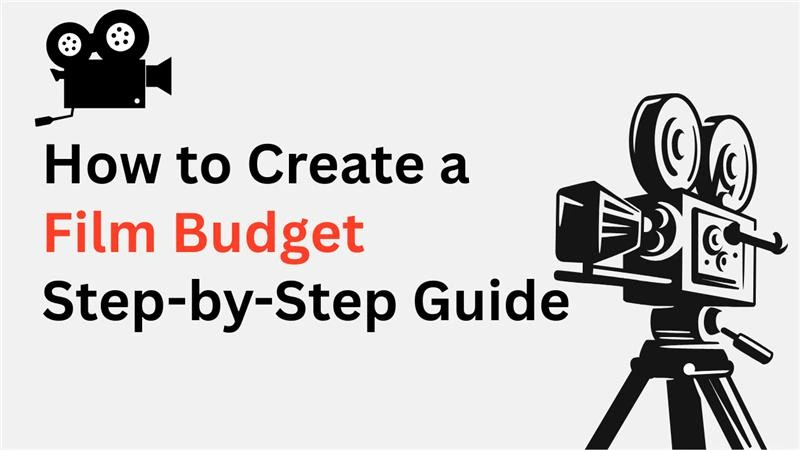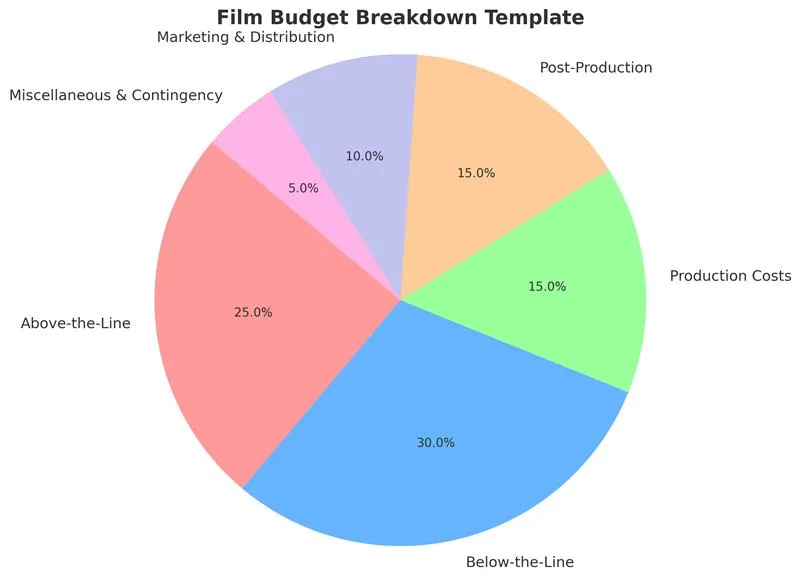Money Talks: The Ultimate Film Budget Breakdown Guide

A film budget breakdown is the foundation of every successful movie. At Immersfy, we help filmmakers plan, track, and manage budgets efficiently, ensuring money is allocated wisely across every stage of production. Whether it’s a small indie film or a big Hollywood release, a clear feature film budget breakdown helps avoid overspending, attract investors, and keep the project on track.
A proper budget breakdown for film includes above-the-line costs (talent, director, script), below-the-line costs (crew, equipment, sets), production expenses (locations, catering, transport), and post-production needs (editing, VFX, sound). Beyond this, a film marketing budget breakdown is equally vital, covering promotions, PR, and distribution to ensure the film reaches audiences worldwide.
In this guide, we’ll explore why budgeting matters, key components, real-life examples, percentage breakdowns, and lessons to help filmmakers plan smarter.
Why It Is Important to Budget Breakdown for a Film
A film budget breakdown is the detailed allocation of costs across all stages of filmmaking, from pre-production to marketing and distribution. It ensures that resources are used efficiently, prevents overspending, and helps maintain financial control throughout the project. Beyond managing money, a well-planned budget attracts investors and production partners by demonstrating professionalism and foresight.
It also ensures smooth production, as cast, crew, and departments clearly understand their financial limits and priorities. By identifying above-the-line costs (talent and creative team), below-the-line costs (crew, equipment, and sets), and post-production and marketing expenses, filmmakers can plan strategically, reduce risks, and make informed decisions to deliver a successful and profitable film.
Key Components of a Film Budget Breakdown
Above-the-Line Costs

Above-the-line costs are the expenses related to the creative side of filmmaking. This includes the scriptwriter, director, producers, and main actors. These are usually negotiated before filming starts and can take up a large portion of the budget.
In Avengers: Endgame (2019), Robert Downey Jr.’s salary alone was over $50 million, showing how star talent and top creatives can dominate the budget. These costs are essential because they directly affect the film’s quality and audience appeal.
Below-the-Line Costs

Below-the-line costs cover all technical and physical aspects of production. This includes the crew (cinematographers, sound engineers, and costume designers), equipment (cameras, lights, and props), and sets.
Black Panther spent heavily on creating Wakanda, including costumes, props, and detailed sets. These costs are crucial for turning the creative vision into a tangible, well-executed film.
Production Costs

Production costs involve day-to-day expenses during filming. This includes location rentals, catering, transportation, and accommodations for the cast and crew. Movies shot in multiple locations usually have higher production costs.
Mission: Impossible—Fallout was filmed in several countries, like New Zealand, Norway, and France, which increased production spending. Managing these costs efficiently ensures the production runs smoothly without delays.
Post-Production Costs
After filming, post-production transforms raw footage into a polished movie. This includes editing, sound mixing, visual effects (VFX), and color grading. Big films often spend huge amounts here.
Avatar (2009) is a famous example, with much of its budget going to advanced VFX that created its immersive world. Post-production is where the movie comes to life, so it’s a vital part of the budget.
Marketing & Distribution

Marketing ensures the film reaches audiences worldwide. This includes promotions, PR campaigns, film festivals, and advertising across digital, TV, and print media. Some films even spend as much on marketing as on production.
The Lion King (2019) reportedly spent over $150 million just on marketing. A strong marketing budget can make or break a film’s box office success.
Miscellaneous & Contingency

This category includes unexpected costs such as insurance, legal fees, and emergency funds. Most productions set aside 5–10% of the budget for contingencies, covering things like weather delays, reshoots, or last-minute emergencies. This ensures the project can handle surprises without going over budget.

How to Create a Film Budget: Step-by-Step Guide
Creating a film budget is one of the most critical parts of filmmaking. A well-planned budget ensures your production stays on track, helps secure financing, and allows you to allocate resources efficiently. Here’s a detailed step-by-step guide to creating a comprehensive film budget. Using tools and templates from Immersfy, filmmakers can streamline planning and manage costs more effectively.
1. Define Your Project Scope
Start by clearly defining the scale of your project. Are you planning an indie film, a short film, or a big-budget feature? Understanding the scope helps estimate the overall costs more accurately. Consider factors like the number of shooting days, locations, cast size, and special effects. A realistic project scope sets a solid foundation for your budget.
2. Research Real Costs
Next, gather actual rates for all essential aspects of production. This includes:
- Locations: Rental fees, permits, insurance
- Talent: Actor salaries, director and crew wages
- Equipment: Cameras, lighting, sound gear
- Post-production: Editing, visual effects (VFX), sound design, and color grading
Accurate research ensures you’re not underestimating expenses and helps avoid financial surprises later.
3. Categorize Above-the-Line and Below-the-Line Costs
Film budgets are typically divided into two categories:
- Above-the-line (ATL): Creative costs, including script development, director, producers, and main cast.
- Below-the-line (BTL): Technical and production costs, such as crew salaries, equipment rental, set design, costumes, and post-production.
Separating these costs allows better financial management and clarity when allocating resources.
4. Add Contingency Funds
Unexpected costs are inevitable in filmmaking. Always set aside 5–10% of your total budget as a contingency fund. This cushion covers emergencies, reshoots, or last-minute location changes without derailing your production.
5. Review with Experts
Before finalizing, review your budget with a line producer, production manager, or financial advisor. Their expertise helps identify hidden costs, optimize spending, and ensure your budget aligns with industry standards

Feature Film Budget Breakdown Example
When planning a feature film, allocating your budget efficiently ensures a smooth production process. Here’s a typical breakdown with percentage ranges:
Talent (Actors, Directors, Writers): 25–30%
Covers salaries, fees, and any bonuses for key cast and creative personnel.
Production Crew & Equipment: 30–35%
Includes costs for camera equipment, lighting, sets, locations, crew salaries, and on-set expenses.
Post-Production (Editing, VFX, Sound): 15–20%
Encompasses editing, visual effects, sound design, color grading, and scoring.
Marketing & Distribution: 10–20%
Budget for promotions, trailers, press events, advertising, and distribution channels.
Contingency (Emergency Funds): 5–10%
Reserved for unexpected costs or overruns during production.
This flexible structure helps both indie filmmakers and major studios plan realistically while managing resources efficiently.
Lessons Learned and Takeaways from Famous Films
Analyzing successful films can teach filmmakers valuable budgeting lessons:
- Be Realistic: Avoid overestimating resources. Stick to achievable numbers to prevent overspending and ensure a smooth production process.
- Use Your Budget as a Creative Tool: Limited budgets can inspire innovative solutions. For example, Paranormal Activity was made for just $15,000 and went on to gross nearly $200 million, showing that creativity often trumps a large budget.
- Stay Flexible: Production challenges are inevitable. Adjust your budget as needed and prioritize critical areas without compromising the overall vision.
- Track Spending Continuously: Regularly update your budget to monitor expenses and prevent overspending. Platforms like Immersfy make it easy to keep all your budget data organized in one place.
Learn from Past Productions: Review case studies and previous budgets to understand common pitfalls, cost-saving measures, and industry benchmarks.
Common Questions on Film Budget Breakdown
Why is creating a film budget important?
A film budget helps filmmakers allocate resources effectively, secure financing, track expenses, and avoid overspending during the production of a film.
What is the most expensive part of film production?
Talent salaries (actors, directors) and production costs (crew, equipment, sets) usually make up the largest portion of a film budget. For big-budget films, visual effects (VFX) and marketing can also be extremely costly.
What are above-the-line and below-the-line costs?
- Above-the-line (ATL): Creative costs like script, director, producers, and main cast.
- Below-the-line (BTL): Technical costs like crew, equipment, locations, and post-production.
How do I estimate costs for a film?
Research actual rates for locations, talent, crew, equipment, and post-production services. Use past projects or industry standards as a reference.
Should I include contingency funds in my budget?
Yes. It’s recommended to set aside 5–10% of your total budget for unexpected costs such as emergencies, reshoots, or last-minute changes. A proper film budget breakdown should always include a contingency section to avoid financial stress during production.
Can a small-budget film still be successful?
Absolutely. Many films, like Paranormal Activity, achieved massive success despite low budgets by focusing on creativity and smart resource management. Even with a limited budget breakdown for film, success is possible if funds are allocated wisely.
How often should I review my film budget?
Regularly—ideally weekly during production—to ensure spending aligns with your plan and adjust for any unexpected costs. In a feature film budget breakdown, frequent reviews are key to preventing overspending and ensuring smooth progress.
How can I make my film budget more accurate?
Review it with a line producer, production manager, or financial advisor; track expenses regularly; and adjust as needed to stay within limits. A detailed film budget breakdown or film marketing budget breakdown helps improve accuracy by clearly defining every expense.
What are common mistakes in film budgeting?
Overestimating or underestimating costs, skipping contingency funds, ignoring post-production costs, and failing to track expenses in real-time are common mistakes. These errors can easily derail a feature film budget breakdown if not handled carefully.
Which film has the highest budget?
As of now, Avengers: Endgame (2019) is often cited as one of the highest-budget films, with an estimated budget of around $356 million. Big-budget films often include extensive VFX, star salaries, and global marketing costs, which are heavily reflected in their film marketing budget breakdown.
